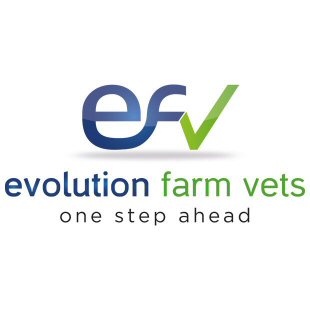Coccidiosis, caused by protozoa of the Eimera species, is a disease of the gastrointestinal tract. Most cattle are infected with coccidia at some point in their lives, but in most cases the parasite does not cause clinical disease. Clinical signs tend to occur in animals that are heavily infested or if they have lowered immune defences due to stress, poor nutrition or concurrent disease. Calves become infected through ingestion of sporulated oocysts, which undergo multiple cycles of asexual and sexual reproduction and form huge numbers of occysts which are excreted in the faeces and can be ingested by other calves.
There are different strains of coccidia, and some are more likely to cause disease than others. Strains that invade the small intestine are likely to cause fewer clinical signs because the rate of cell turnover is high so damaged cells are replaced quickly, and because the large intestine can compensate to some degree. Coccidia that invade the large intestine are more likely to cause clinical disease because the rate of cell turnover is much slower and there is no compensatory effect by other parts of the intestine, meaning that water resorption is impaired and diarrhoea results. Coccidia that invade the tip of the intestinal villi cause less clinical disease than those that invade the base; the base of the villi provides new cells that continually replace worn cells and if these cells are infected, damaged cells cannot be replaced. Severity of disease may be exacerbated if there is infection with different coccidia that affect different regions of the gut concurrently, or if there is concurrent infection with other infectious agents such as worms, bacteria or viruses.
Calves are initially protected against disease by antibodies acquired through colostrum intake. They then become susceptible to disease as maternal antibodies fall, and so most calves that acquire disease do so in the first few months of life (3 weeks to 6 months). However, not all calves show signs of disease as they may develop their own immunity against the disease. Disease (clinical signs) usually follows a stressful episode such as transport, change in feed, severe weather or concurrent disease.
Clinical Signs
- Diarrhoea (with or without mucous or blood)
- Fever
- Inappetance
- Abdominal pain
- Poor thrift and weight loss
- Anaemia
- Death
Treatment
Outbreaks of clinical coccidiosis can appear suddenly. If deaths are occurring, early confirmation is vital and is based on history, clinical examination and intestinal smears. Affected animals should be treated and moved onto uncontaminated pastures. Only a few active ingredients are licensed for treatment of coccidiosis, including Decoquinate. All calves in contact with the affected animals should be treated as even those without clinical signs may be infected and therefore may maintain the disease in the environment. Calves particularly at risk are those kept indoors on damp bedding, or those on contaminated, heavily stocked pastures. Young animals should be kept away from these environments where possible. Toltrazuril (Baycox, Bayer plc) is licensed in the UK for prevention of coccidiosis.
